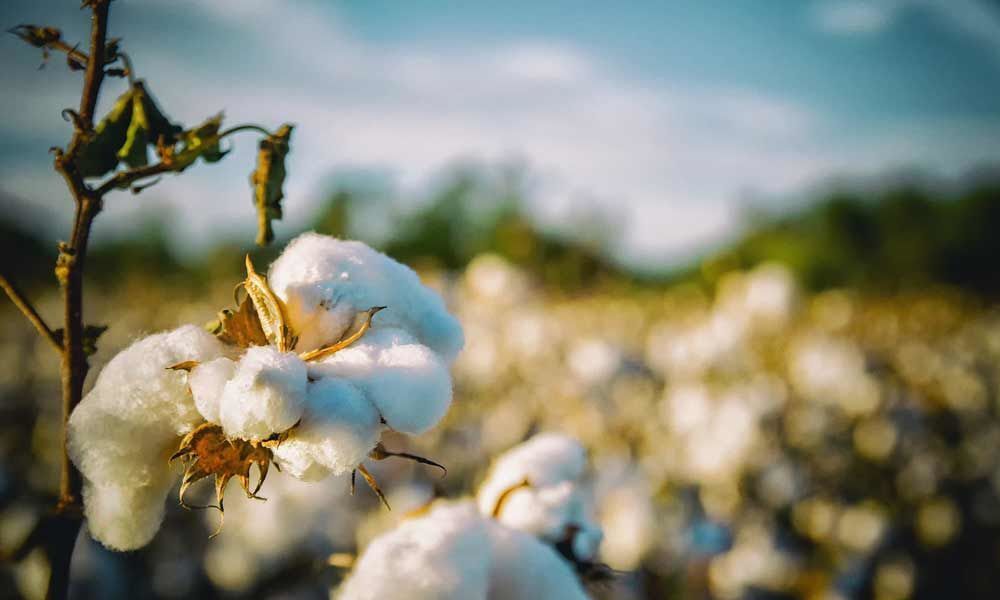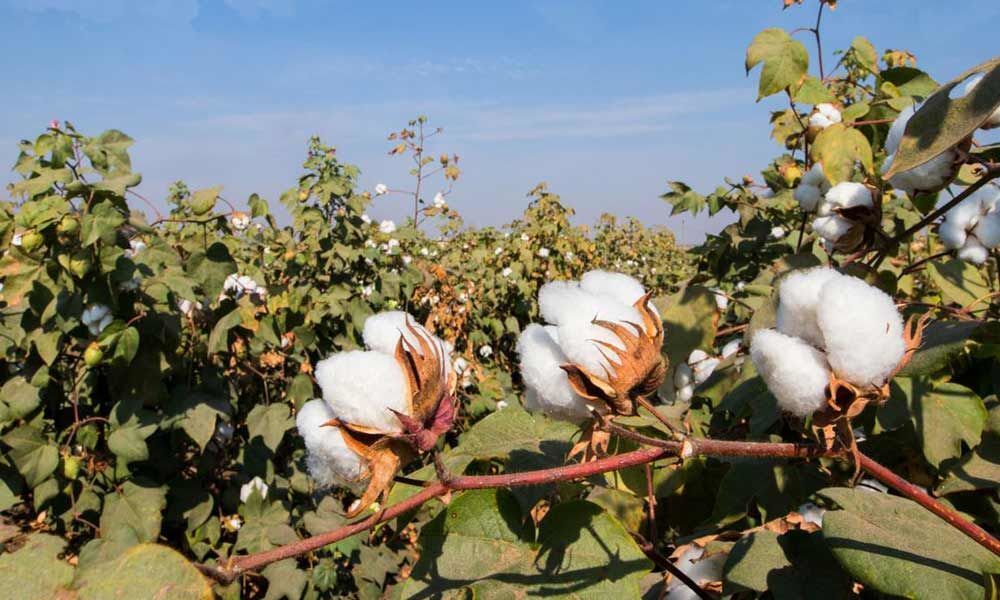The story of summer weaves
Both Telugu speaking States have a rich history in cotton handloom and have their own unique weaving patterns, styles and methods and each loom is recognised with its distinct weaving style and variety of fabric. However, the handlooms went on a downward spiral as masses gave them up. In the face of all adversities, the industry still survives although with reduced numbers...
In the twin States of Andhra Pradesh and Telangana, handloom is an important cottage industry.
Since both states fall in the southern part of India, they are warmer and cotton being a staple crop, the fabric is produced using it.
Each district in these states has a very distinct way of designing and producing handlooms.
They have their own unique weaving patterns, styles and method and each loom are recognised with its distinct weaving style and variety of fabric.
The most exquisite of unique designs are designed and produced in these two states.
The weavers in here have expertise in producing fabrics which is a fine blend of natural silk and cotton and these have been named as 'cotton-silk' or 'seico'.
With about 2,00,310 handloom weavers in the co-operative fold and 1,58,902 outside it who produce the most exclusive sarees, dress-materials, upholstery, and home furnishings and with the support of the two government handloom cooperative societies, APCO and TSCO, handlooms are reweaving a mark.
Handloom has a complex history which shapes the contradictions and strengths of the industry.
The markets have moved away and the immediate markets have become smaller.
The decline of handlooms started soon after independence.
Whilst mechanised synthetics began to gain popularity as they are faster to produce, cheaper and easy to maintain.
The handlooms were less preferred by the commons as convenience became a buzzword.
The handlooms went on a downward spiral as masses gave them up.
Many weaves which were an organic part of both the State's culture were losing relevance including ones like Uppada, Mangalagiri, and Gadwal, which have been popular for centuries.
Two decades ago middlemen were powerful leading to weavers migrating from their villages and moving away from skills honed over centuries.
Ancient traditions of handloom were fading so rapidly with the advent of modernisation, not able to face the onslaught by power looms.
Pochampally ikat and Kalamkari were among the top trends in handloom fabrics, but the trend is already on a decline.
In the face of all these adversities, the industry still survives although with reduced numbers.
Weaving has always been a community activity located in a specific demographic in each geographical area and handloom production is majorly carried out in the village and the looms are located in weaver's homes.
The weaver almost always operates with the help of his family and traditionally, pre-loom activities like dyeing & warping were outsourced, attaching the warp, weft winding & weaving activities were carried out by the weaver.
This has changed over the years due to various factors and pre-loom activities like sizing are now also being outsourced.
Weavers fall under different categories, they can be truly independent, manage their own production and marketing and such weavers are very rare in both the states.
Weavers can be members of co-operative societies and the societies supply yarn to the weavers and sell the product.
The individual weavers can work for master weavers, who supply the inputs and sell their output to the master weavers.
More than three-quarters of the production comes from master weavers.
Finally, there are some weavers who do not own a loom themselves.
But all employed by co-operative societies or by master weavers.
The dividing lines among the various forms of organisation are fluid rather than rigid.
Most weavers who are the members of a co¬-operative also occasionally work for master weavers but remain members of the co-operative in order to benefit from government subsidies or schemes.
Today almost every other designer uses #iwearhandloom irrespective of using actual handloom or even knowing the process of traditional weaves.
In some way, it is encouraging for the handloom community that designers are trying to experiment with handlooms for a prêt or couture line.
Gaurang Shah and Shravan Kummar Ramaswamy have been associated with handlooms since the '90s and giving handlooms the desirable twist with the use of striking motifs and colours and bringing handlooms to the limelight by dressing up celebrities and taking these weaves not just to Indian fashion weeks but also international.
The Government too has been supportive of the handlooms industry. State-run initiatives are bringing fabrics like Pochampally, Narayanpet, Khadi to the limelight, with many state governments assigning a day in the week as handloom day.
On such days, state government employees are advised to wear handloom outfits to work.
Telangana, for instance, has their government employees sporting handloom wear every Monday.
Handlooms from Telangana, such as Pochampally, Gadwal, Narayanpet, Siddipet, and Gollabhama are getting modern touches under the mentorship of designers like Rahul Mishra and Chelna Desai.
The fabrics are also fetching attention through corporate tie-ups with big name brands.
Students too have been urged to wear handlooms, and some schools may soon have handloom uniforms.
The state is also concentrating on the development of weavers and the Andhra Pradesh Handloom Weavers' Cooperative Society (APCO), is concentrating on increasing its e-commerce business through APCO's website.
Ghanshyam Sarode a textile designer says, "There is a market for various quality level and each of it has a market.
Elite society has a certain taste which prefers the best handloom cottons and whereas an MNC office goer looks for subtle and sober colours and medium quality.
The demand for ikat is falling down and some cotton handlooms like Mangalgiri and Uppada are constant.
While Narayanpet and Gadwal Cotton sarees are picking up.
Siddipet, Bandarlanka and Armoor cotton handlooms are consumed by the middle class and lower middle class in the villages from the local stores.
Hot areas like Delhi and Kolkata does really well in cotton handlooms. In southern regions like Vizag, Hyderabad, cotton are the requirement and the only choice and top of the list, irrespective of different qualities".
On the contrary, designers started to contemporise these traditional textiles and organisations like Dastkar were reinventing and reviving weaves.
Suraiya Hassan and Uzramma brought weaves like Mashru, Himroo, Paithani, and Malkha back from the brink of extinction.
Uzramma, who revived Malkha cotton and worked with handloom, says, "Since India's strength lies in small-scale, dispersed production, cotton yarn spinning should also be on a scale to match our small-scale hand-weaving, and being dispersed, should eventually be linked to cotton farming.
This idea was developed in the last years of the previous century.
Malkha faced many big challenges — from convincing the government to fund the early development to overcome the technical problems of the small-scale machinery."
Handlooms have an excellent future, when fostered as green or sustainable fashion that has a minimal carbon footprint on the earth. We have an advantage of having handlooms as a part of our tradition and culture, thus, not letting our craft to die can secure great opportunities in the worldwide market.
Our handlooms have a scope to be both festive and everyday wear.
There are textiles that are simple and have been translated into daily wear like khadi, ikat, Maheshwari, Mangalgiri, block prints and much more.
Jamdani weaves like Uppadda, Venkatgiri, Dharmavaram as a niche product not just because of the months of time taken to weave but also the royal look for the special occasion.
Handloom sarees are loved all around the year in the southern states.
They give a very desi and down to earth look and everyone loves them.
Not just elegant, handloom sarees are extremely comfortable and practical too.
Handloom sarees are very light and extremely breathable and comfortable.
They reflect simplicity and grandeur at the same time. Here are some of the tips to style your handloom sarees.
You can pair a simple blouse having the shade of the dominant colour of the saree.
Keep the blouse simple with none or minimal embroidery work.
Any type of sleeve can fully complement a handloom saree.
Keep the makeup extremely minimal and wear traditional jewellery like jhumkas or silver jewellery.
And finally, you can finish the look with buns or a side ponytail.
Drape Pochampally ikat cotton saree in a nonconventional way with a collared blouse.
Add a cute neck piece to add some jazz to the saree.
A fishtail braid will suit the look well while finishing your look with kohl filled eyes and nude lipstick and a classic clutch.
Simple Pochampally sarees can be styled with earthen jewellery like Terracotta and wooden beads.
Try a golden waist belt to steal the show, especially in large events like weddings.
An embroidered clutch goes very well with Ikkat sarees but is sure to get one in a neutral colour like gold and silver.
A white cotton uppada handloom saree can be paired with a matching or contracted elbow-length blouse.
Finish the look with heavy kohl eyes, and nude lips and stand out with a statement pair of earrings while keep your hair in a chic low bunch to show them off.
Wear Narayanpet cotton inspired by Shilpa Reddy's Style.
A saree matching blouse with full sleeves, while finishing the look with kohl filled eyes and a hint of lipstick to bring out the fashionista look.
-The writer is the founder of PikaLove, sustainable fashion label






